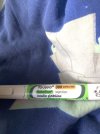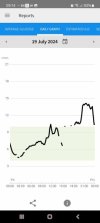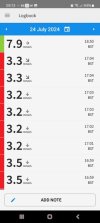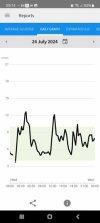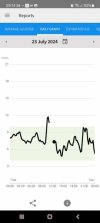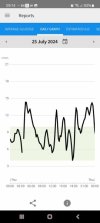As
@Inka has said, the sensors which monitor your levels are prone to what we call "compression lows" if you apply pressure to them for any length of time and the most likely way that this can happen is if you lie on the sensor in your sleep. Generally it takes about 20 mins for the compression to have an effect and start showing your levels as dropping and a similar time for it to "recover" when you release the pressure. You should always double check any lows where you don't feel "hypo" but particularly during the night. It may well be the warmer weather making you toss and turn in your sleep a bit more and making this more likely to happen. There are a couple of things you can try to prevent it. Placing your next sensor more towards the back of your arm and "learning not to lie on the arm that the sensor is on or developing a sleeping position which prevents the sensor being exposed to too much pressure. That may seem unrealistic but you do have spatial/positional awareness when you are asleep which is why you don't roll out of bed, even in a strange place like a hotel, so you can learn a different sleeping position. If I want to lie on that side I place my other hand under my arm just above the elbow and it lifts my arm off the bed enough to prevent compression lows. It sounds like a faff but together with better placement, has certainly worked and I can't remember the last time I had a compression low. Probably over a year.
Having said all that, they may be genuine lows caused by too much Toujeo and this may be due to you experiencing the "honeymoon period" which I will describe below. Double checking with finger pricks blood tests and a BG meter will help identify whether they are compression lows or genuine lows.
As regards Fiasp and worrying about it dropping your levels, what you have to understand is that whilst the insulin drops your levels by about 3mmols per unit, the carbohydrates you eat raises it and the guidance is that 10g carbs will raise your levels by about 3mmols. These are rough guidelines and will differ for everyone, but if for example you are going to eat a bacon buttie for breakfast, there will be about 45g carbs in a large white roll, so those 45g carbs will raise your BG by about 13.5mmols, so if you are on 6mmols before breakfast and you eat that bacon buttie you will end up almost on 20mmols if you don't take your insulin. Fiasp works over about 3 hours so it doesn't suddenly drop you as soon as you inject it and on a morning it is usually slower to be effective. So as that bread in the bacon buttie is digesting and releasing it's glucose, the insulin is starting to release to deal with it. The trick is to time the insulin and food so they both hit the blood stream at more or less the same time to sort of cancel each other out. Getting that timing right is a mixture of scientific experimentation, intuition and luck, but the important thing to understand is that the carbs make your levels rise and the insulin brings them down.
All that said, the early few years after diagnosis, your body is often still producing some insulin, and when you start injecting insulin, it gives your remaining beta cells (which produce insulin) a bit of a rest because up to that point they have been working flat out to try to balance your BG levels and because there are only a few left compared to what you need, they are effectively grossly "overworked and under staffed" The injected insulin can give them a bit of breathing space and takes the pressure off them and as a result they get a new lease of life and start managing to produce more insulin. This is called the "honeymoon period" where you have remaining beta cells able to produce some insulin, but sometimes it isn't consistent and you might need less insulin for a while or even no insulin at all, but sadly eventually your immune system will kill off those remaining beta cells and you will need to inject more insulin. Soetimes this "honeymoon period" will make your diabetes easier to manage and for other people it will make things more erratic and unfortunately you just have to muddle through as best you can until things stabilise. For you that might mean you don't need the Fiasp for a while or you need a smaller dose of Toujeo, if those overnight lows are genuine lows and not compression lows.

